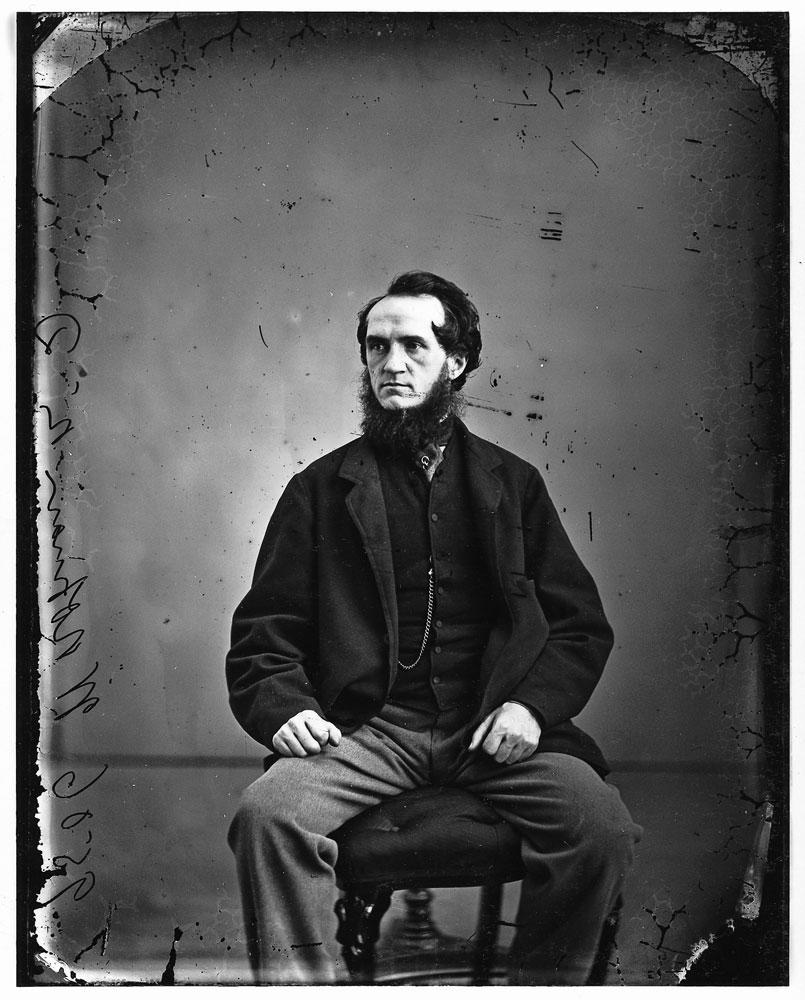William Notman (1826–91) is arguably the most important figure in the early history of photography in Canada. Born in Paisley, Scotland, he moved to Glasgow with his family at the age of 14, and it is there that he received training in art and was introduced to early forms of photography. His father insisted that he join the family wholesale dry-goods business, however, where he worked until immigrating to Montreal in the summer of 1856. He took a job there with the dry-goods merchants Ogilvy, Lewis & Company, but left it near the end of the year to open a portrait-photography studio. He was good, from the point of view of both the quality of his portraits and his skill as a businessman, and the venture flourished from the start. He employed a staff of 35 by 1863 and opened a branch in Ottawa early in 1868, another in Toronto later that year, one in Halifax in 1869, another in Saint John in 1872, and one in Boston in 1877. The Notman firm would eventually have 26 studios in various centres in Canada and the United States. His business acumen extended to constantly expanding the range of the product he offered and responding to every new technical development in the field. For instance, he was one of the first in North America to take so-called instantaneous landscape photographs, the shorter exposures achieved through a reduction of the negative size. And soon after he had opened his business, he began to produce stereographic views in large numbers. Then, in 1870, he began to create large composite photographs, group portraits assembled from posed studio shots of each figure, set in a landscape painted in by one of Notman’s staff artists, then re-photographed as a single print. They became internationally famous.
His skill as an artist was the main reason for his success, however, coupled with his conviction that photography is an art. He very consciously positioned it that way in his first publication, Photographic Selections by William Notman (1863). A handsome book sold by subscription, and with an extensive text by Thomas D. King, the secretary of the Art Association of Montreal, it was offered, according to the preface, “in order to foster the increasingly growing taste for works of art in Canada.” It contained 44 photographs of a range of Old Masters and contemporary paintings—of both reproductive engravings and actual works—and two of Notman’s own photographs “from nature.” Two years later, he published Notman’s Photographic Selections, and this time there were 34 photographs of paintings, two photographs of reproductive engravings of Old Masters, and 12 of his own landscape photos. Although the volume contains no text, it has captions under each image in the manner of lithographs or steel engravings.
St. Anne Falls, near Quebec (before 1865) is one of Notman’s works from this volume. It is one of hundreds of such powerful landscape images he was creating on trips to the Saguenay, up the rivière Saint-Maurice and the Ottawa River, and as far west as Niagara—all areas popular with the group of landscape painters then developing in Montreal (some of whom worked for Notman tinting photographs and completing composites). His image of the falls is masterfully framed by dark trees to draw eyes in to the brilliant rush of water down the centre. The whole picture is a visual poem of balanced, richly textured tones: the cascading white equal to the mid-toned rocks above and to the left, which are equal in turn to the weight of the darker forested area above that, to the near-black framing trees and rocks to the extreme right and left, and to the soft, mellow sky holding it all in as an arrested moment. The Montreal painter Otto Jacobi was so inspired by the work that he painted his own version of the scene later that year. It is a wonderful painting, but Notman’s work of art is more forcefully concentrated, a more intense experience, and, in that sense, a greater work of art.
This is an article from the Winter 2013 issue of Canadian Art. To read more from this issue, check out its table of contents.









